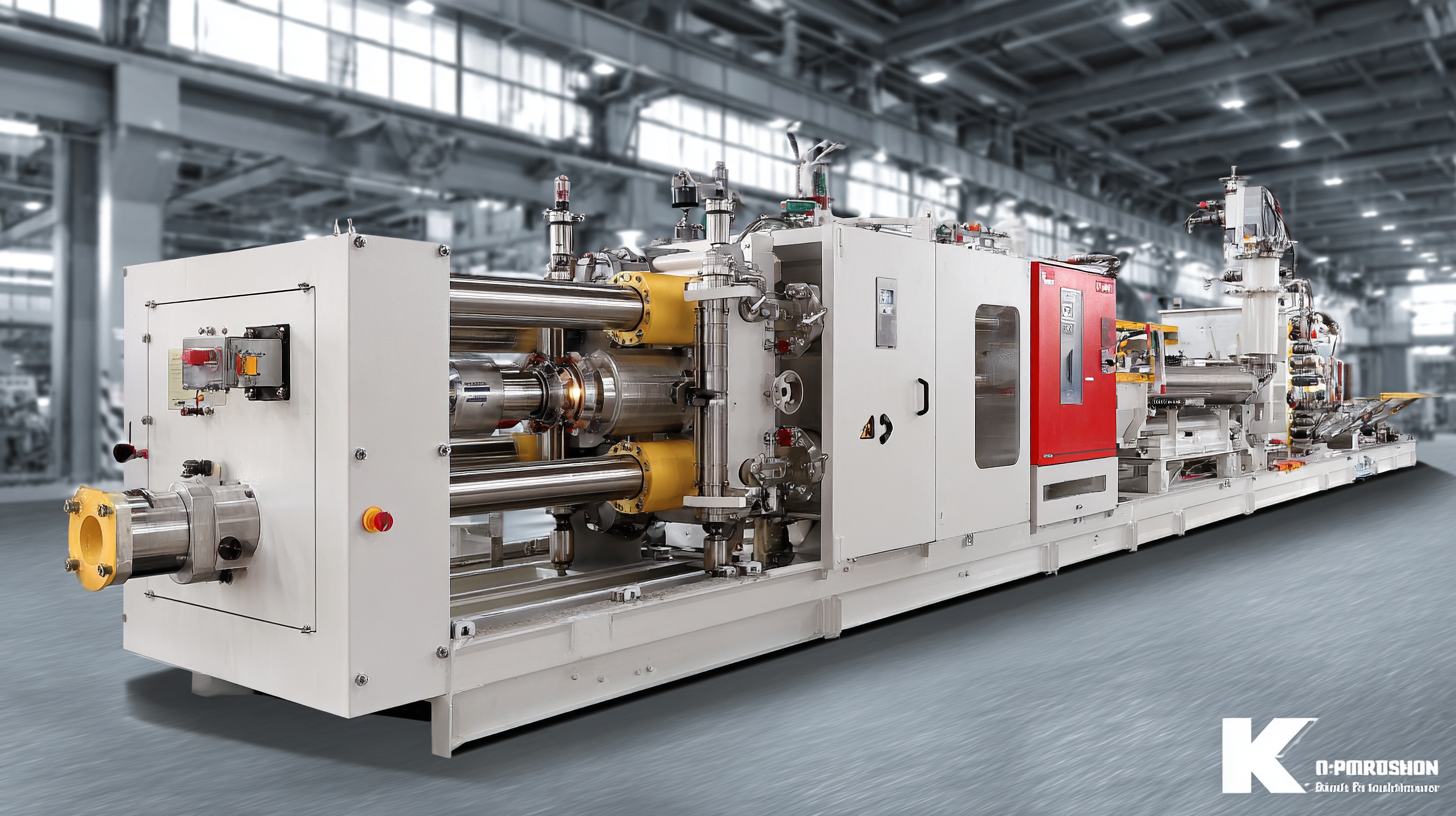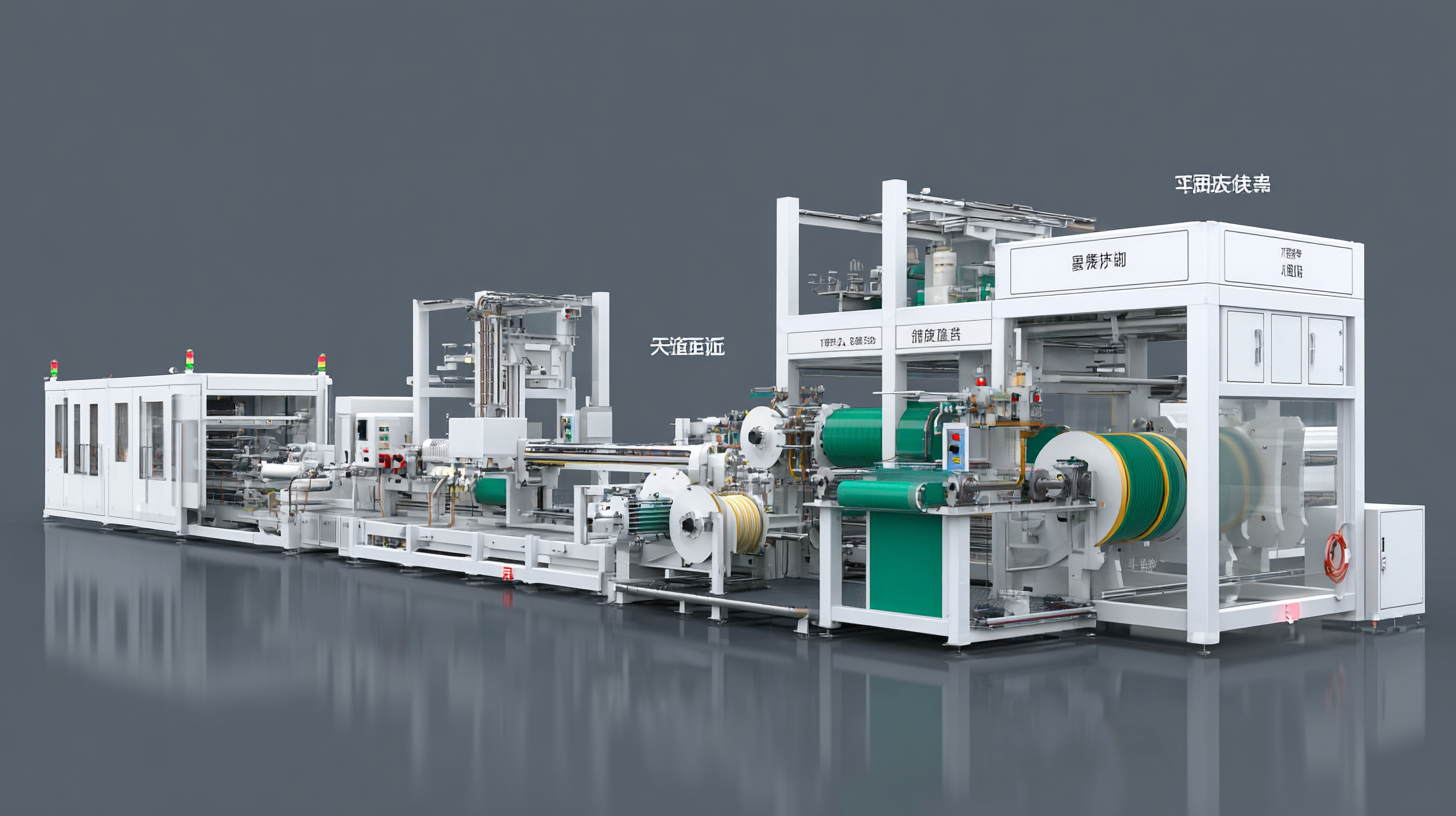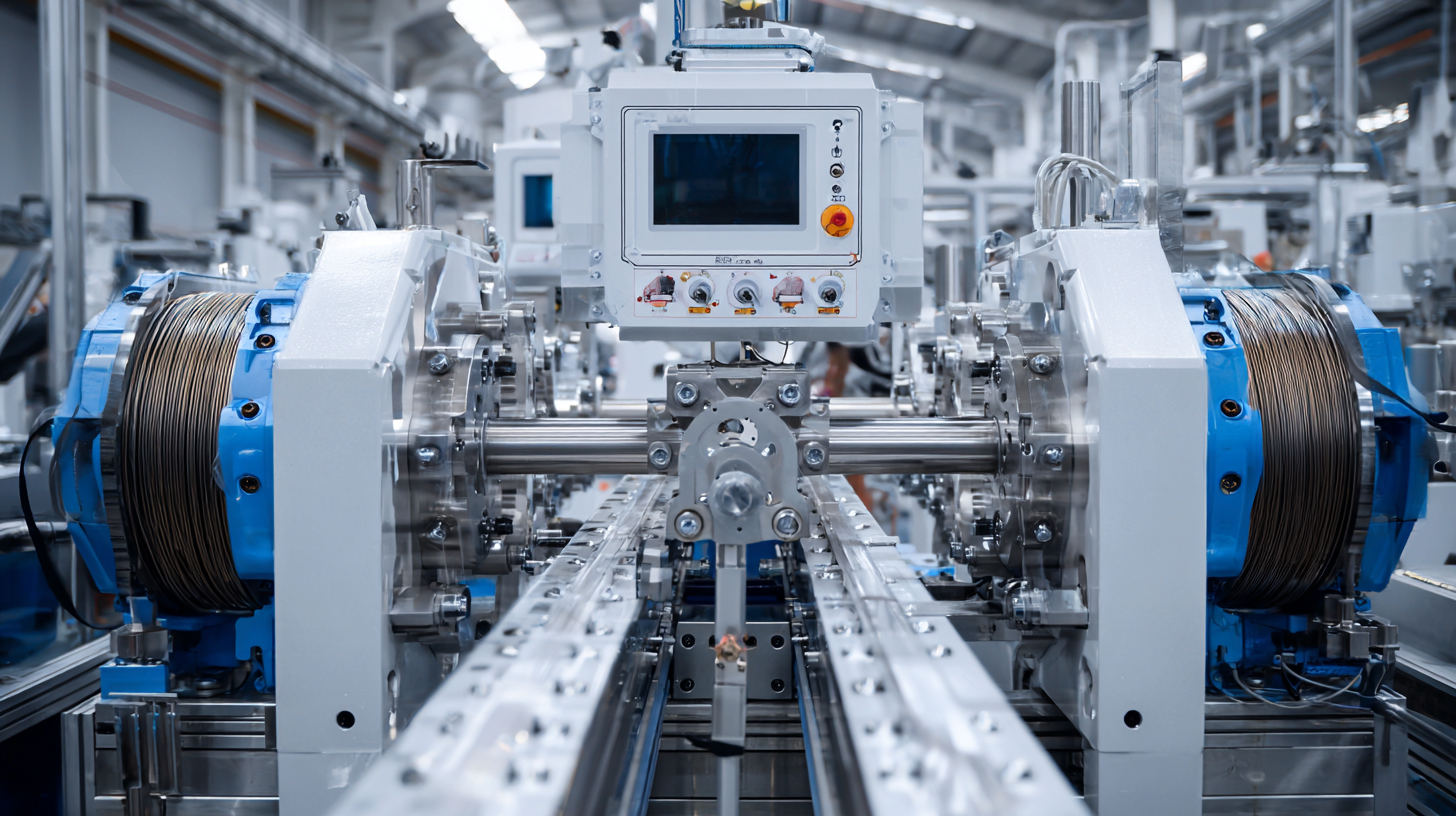
In the ever-evolving landscape of manufacturing, the role of advanced machinery cannot be overstated, particularly when it comes to the efficiency of production processes. Among these pivotal devices, the Plastic Profile Extrusion Machine stands out as a cornerstone for industries aiming to optimize their output. With its ability to produce a vast array of plastic profiles tailored to specific needs, understanding the intricate technical specifications of the best models becomes essential for manufacturers seeking to enhance productivity and quality. This blog aims to unveil the critical features and specifications of top-tier Plastic Profile Extrusion Machines, enabling businesses to make informed decisions that will not only boost production efficiency but also drive innovation in their manufacturing processes. By delving into these specifications, we hope to provide a comprehensive guide that empowers manufacturers to leverage technology for superior performance.

When exploring the realm of plastic profile extrusion machines, it’s essential to grasp the key features that determine their operational success. The best machines in the market today prioritize energy efficiency and have been engineered to optimize power consumption during both hot and cold processes. This not only contributes to a more sustainable production cycle but also significantly reduces operational costs for manufacturers.
Additionally, the design of top-tier extrusion machines often includes advanced technological components such as precise temperature control and adaptable screw configurations. These features enable manufacturers to work with a wide variety of plastic types and profiles, enhancing versatility in production. Understanding these technical specifications allows businesses to select a machine that not only meets their immediate production needs but also supports long-term growth and efficiency in an ever-evolving market landscape.
In the world of plastic profile extrusion, technical issues can significantly hinder production efficiency. One of the most common challenges faced by manufacturers is inconsistent material flow, which can lead to defects in the final product. This issue often arises due to improper machine calibration or irregularities in the raw materials used. Ensuring that the machine is well-maintained and calibrated to the specific requirements of the material is essential for achieving consistent output.
Another frequent technical problem involves temperature control within the extrusion process. Maintaining optimal temperatures is crucial, as overheating can cause material degradation while too low temperatures can result in incomplete melting. Implementing advanced temperature monitoring systems can help operators quickly adjust settings to maintain ideal processing conditions. Additionally, regular inspections of heating elements and cooling systems are vital to prevent unexpected shutdowns or quality issues during production. Addressing these technical challenges promptly not only improves efficiency but also enhances the overall quality of the extruded profiles.
In the rapidly evolving field of plastic profile extrusion, the demand for enhanced production efficiency is more critical than ever. Recent industry reports indicate that the global plastic extrusion market is projected to reach USD 307 billion by 2027, driven by innovations aimed at increasing throughput and reducing waste. The latest advancements in extrusion machines incorporate cutting-edge technologies such as real-time monitoring systems and energy-efficient drives, which have been shown to improve production efficiency by up to 30% compared to traditional models.

Moreover, optimizing the entire extrusion process requires not only the machines themselves but also innovative solutions that integrate with them. Automation and smart manufacturing technologies, such as IIoT (Industrial Internet of Things), allow for better data collection and analysis, enabling manufacturers to make informed decisions swiftly. A study by Plastics Technology revealed that companies adopting these innovative solutions experienced a 25% reduction in machine downtime, significantly enhancing overall operational efficiency. Implementing these technologies positions manufacturers to adapt to market demands while maintaining high-quality output in their extrusion processes.
When evaluating plastic profile extrusion machines on the market, it is crucial to examine their technical specifications, particularly focusing on zone temperatures and melting temperatures which significantly influence production efficiency. According to industry reports, the optimal zone temperatures for extrusion processes typically range from 190°C to 230°C. This range allows for the efficient melting of various thermoplastics, ensuring a homogeneous material flow through the die and minimizing the risk of material degradation.
Moreover, the melting temperature of the resin plays a vital role in the production cycle. Various plastics exhibit distinct melting points; for instance, polyvinyl chloride (PVC) has a melting temperature around 160°C to 200°C, while polystyrene (PS) melts at about 240°C. Machines designed with precise temperature control systems can achieve these melting points effectively, reducing energy consumption and improving product quality. Comprehensive analyses show that machines capable of maintaining consistent temperatures lead to a significant increase in extrusion output, sometimes exceeding 15% in comparison to lower-tier models. Thus, choosing the right extrusion machine with optimal specifications is essential for achieving optimal productivity and efficient operation in plastic manufacturing.

Effective maintenance practices are essential for maximizing the performance and longevity of plastic profile extrusion machines. Regular inspections and preventive maintenance help identify potential issues before they escalate, ensuring optimal production efficiency. Incorporating condition-based maintenance (CBM) strategies can significantly enhance the operational reliability of these machines. By utilizing digital tools and analytics, manufacturers can monitor key performance indicators and make data-driven decisions to optimize machine performance.
Moreover, advancements in technology have brought new methods and materials into the extrusion process. For instance, the latest research on carbon nanotube-polymer composites is paving the way for enhanced properties through advanced manufacturing techniques. These innovations not only improve material performance but also align with emerging sustainability goals, which are crucial in today’s production landscape. By integrating these advanced materials and maintaining a rigorous maintenance schedule, companies can ensure their extrusion machines operate at peak efficiency while meeting increasing market demands.
| Specification | Value |
|---|---|
| Max Output (kg/h) | 800 |
| Screw Diameter (mm) | 75 |
| Temperature Control Zones | 5 |
| Motor Power (kW) | 110 |
| Dimensions (mm) | 4000 x 1500 x 2200 |
| Weight (kg) | 2500 |
| Cooling Method | Water Cooling |
| Suitable Materials | PVC, PE, PP |
| Maintenance Task | Frequency | Notes |
|---|---|---|
| Lubrication of Moving Parts | Weekly | Use high-quality lubricant to prevent wear. |
| Check Temperature Sensors | Monthly | Ensure proper calibration for efficiency. |
| Clean Filters | Every 500 hours of operation | Prevent blockages and maintain flow. |
| Inspect Electrical Connections | Quarterly | Look for signs of wear or corrosion. |
| Test Emergency Stop Functionality | Monthly | Ensure worker safety in case of malfunction. |
